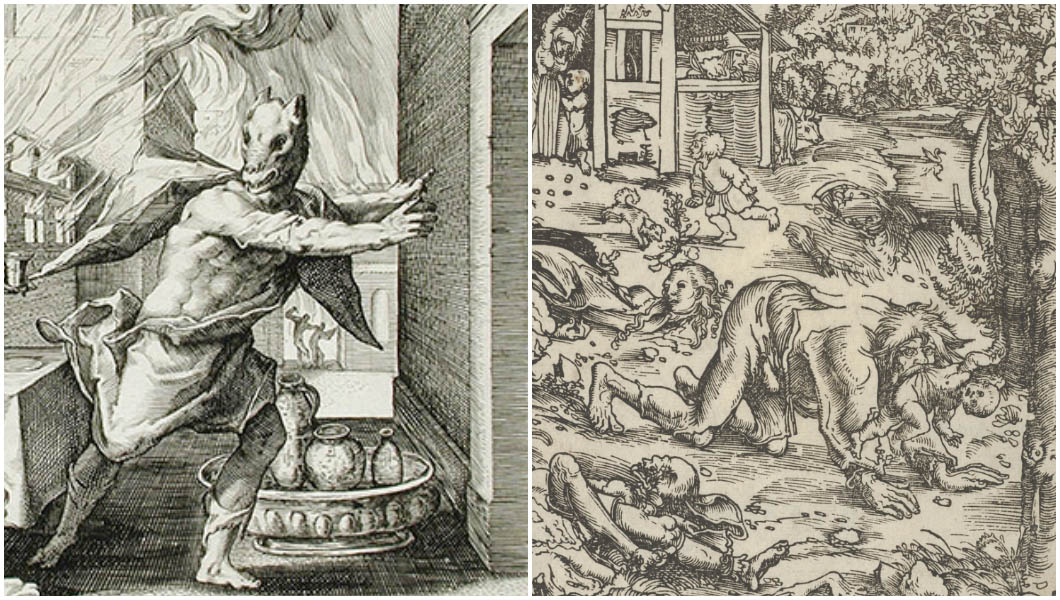The record-breaking legend of the man-eating werewolf king

Much like witches and vampires, the concept of the werewolf, a human who transforms into a wolf or wolf-like creature, is as old as humanity itself.
The earliest depiction of a werewolf in history dates back to ancient Greece, with the first literary reference to this mystic creature being found in The Histories by ancient geographer Herodotus.
Composed in the Ionic dialect and recording the traditions, politics, geography, and clashes of several different cultures, Herodotus’ Histories was written roughly around 430 BC.
A translated segment of his work reads: "It may be that these people are wizards; for the Scythians and the Greeks settled in Scythia, say that once a year every one of the Neuri becomes a wolf for a few days and changes back again to his former shape."

Although with some notable differences from the modern werewolf, Herodotus left the earliest trace in literature of a human with the capacity to shapeshift into a wolf (earliest legends also report of humans turned into wolves, but without the possibility to ever change back to human form).
The segment refers to an ancient tribe called Neuri, which likely settled in the Western Balkans.
Neighbours of the Scythians and allegedly forced out of their territory by an invasion of snakes, Herodotus describes the Neurian society and culture in a section of Book IV: Melpomene.
He also writes that according to rumours and tales passed on from local Greeks, the Neurians were a tribe of sorcerers who could annually turn themselves into werewolves for several days in a row.
Although Herodotus affirms that such stories seem too far-fetched to be believable, he nonetheless reports their existence.

The term "Lycan" likely comes from another ancient Greek myth: the story of Lycaon, King of Arcadia, which serves as a the first archetype for many werewolf legends.
In an attempt to prove the divinity of the god Zeus, Lycaon served him a meal that included the human flesh of Nyctimus, the youngest of his own 50 sons – all to test if the almighty king of the Gods could tell the difference between the taste of human and animal flesh.
Disgusted and enraged, Zeus turned Lycaon into a wolf and restored Nyctimus’s life.
In The Metamorphoses, written by Roman poet Ovid around 8 CE, Lycaon instead slaughtered some hostages and served their flesh to Zeus to test the divinity of his guest.
To punish the mortal's cruelty and to avenge the crime, Zeus turned him into a beast: and yet, even as he fled to the countryside, the king’s eyes were still aflame with bloodlust and ferocity.
Such was the punishment for the king who dared challenge the gods.
…He tried to speak, but his voice broke into an echoing howl. His ravening soul infected his jaws; his murderous longings were turned on the cattle; he still was possessed by bloodlust. His garments were changed to a shaggy coat and his arms into legs. He was now transformed into a wolf. - English translation of a passage from The Metamorphoses
Although the tale of King Lycaon has been often rearranged and present several differences between its many versions, the core of this myth laid the foundation for the concept of lycanthropy.
But it was the Roman Petronius, in a famous passage of the Satyricon, who first introduced another element that today we associate with werewolves: a man turning into a wolf as "the moon shone like high noon".
"He made a ring of water round his clothes and suddenly turned into a wolf," continues the passage.
Later, the full moon became explicitly linked with werewolf transformations.

The dichotomy between human and beastly impulses continued to fascinate, and the figure of men-wolves has persisted in folklore and literature through the ages.
The modern word ‘werewolf’ stems from an Old English term, ‘wer’ meaning ‘man’: the word were-wolf, hence, translates directly into man-wolf.
A similar idiom can be found in several other languages:
- the German werwulf
- the Italian lupo mannaro (from the Latin lupus hominarius)
- the French loup-garou
- the vargr in Icelandic (interestingly, the term vargr had a negative connotation also meaning "outlaw" or "monster," as opposed to the word "wolf")
The earliest usage of the word werewolf can be found in the Ecclesiastical Ordinances of King Cnut (also known as Canute).
The ruler of the Anglo-Scandinavian Empire (1016-1035) released two complementary law codes, today known as The Laws of Cnut.
These laws mention the presence of werewolves, although it is important to notice that they did not refer to the modern concept of a shapeshifting creature.
Such mentions of werewolves might have been synonymous with outlaws or even of devils, with a symbolic and religious meaning of 'evil'.
"Therefore must be the shepherds be very watchful," reads the section, "that the madly audacious werewolf do not too widely devastate, nor bite too many of the spiritual flock."
After that, several cases of werewolves have been reported all around the world: be it hysteria, medical conditions or whispers of magic, we can't but look back to Herodotus for that first, record-breaking, mention of man-wolves.

Want more? Follow us on Google News and across our social media channels to stay up-to-date with all things Guinness World Records! You can find us on Facebook, Twitter/X, Instagram, Threads, TikTok, LinkedIn, and Snapchat Discover.
Don't forget to check out our videos on YouTube and become part of our group chat by following the Guinness World Records WhatsApp channel.
Still not had enough? Click here to buy our latest book, filled to the brim with stories about our amazing record breakers.


